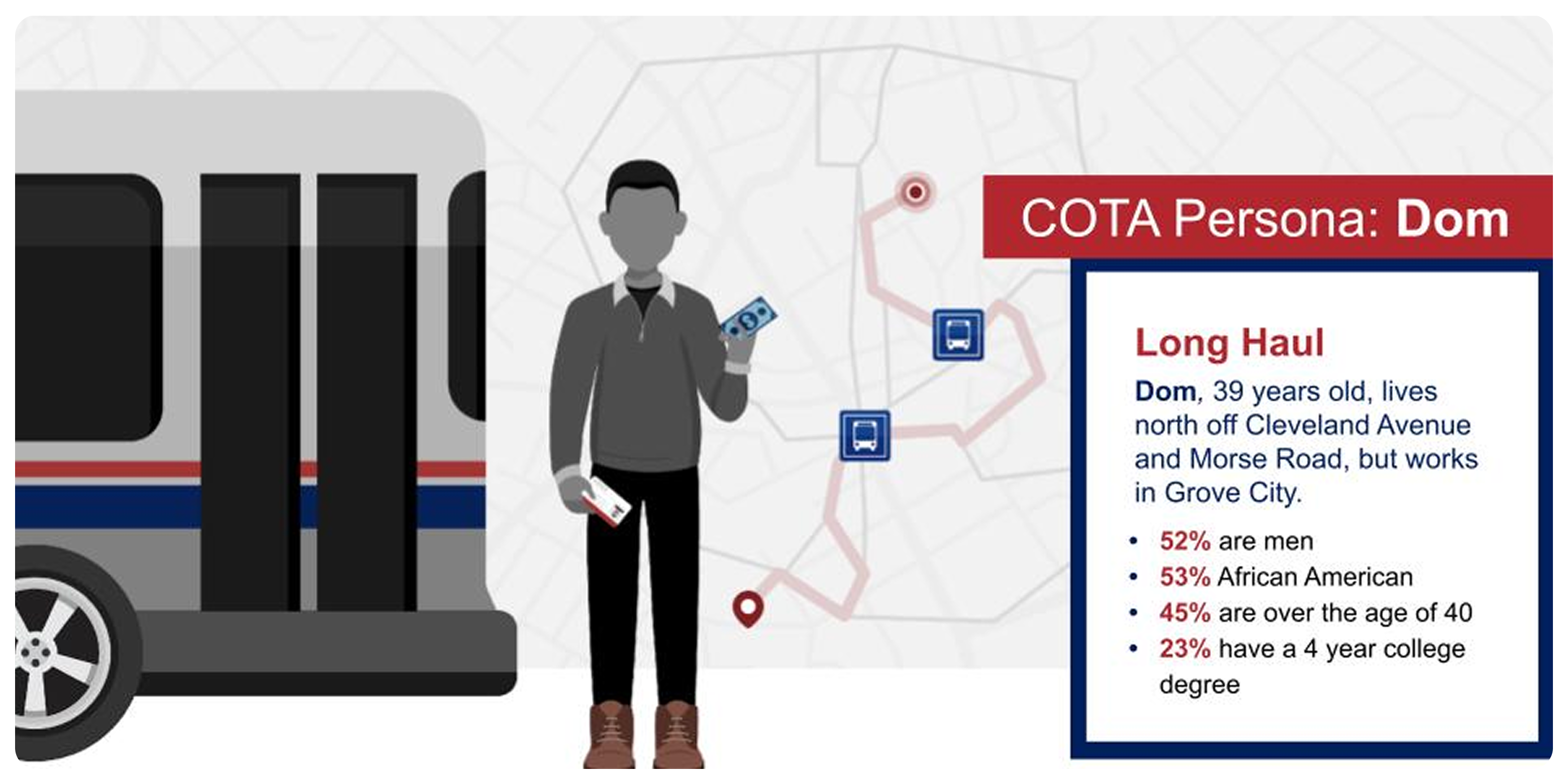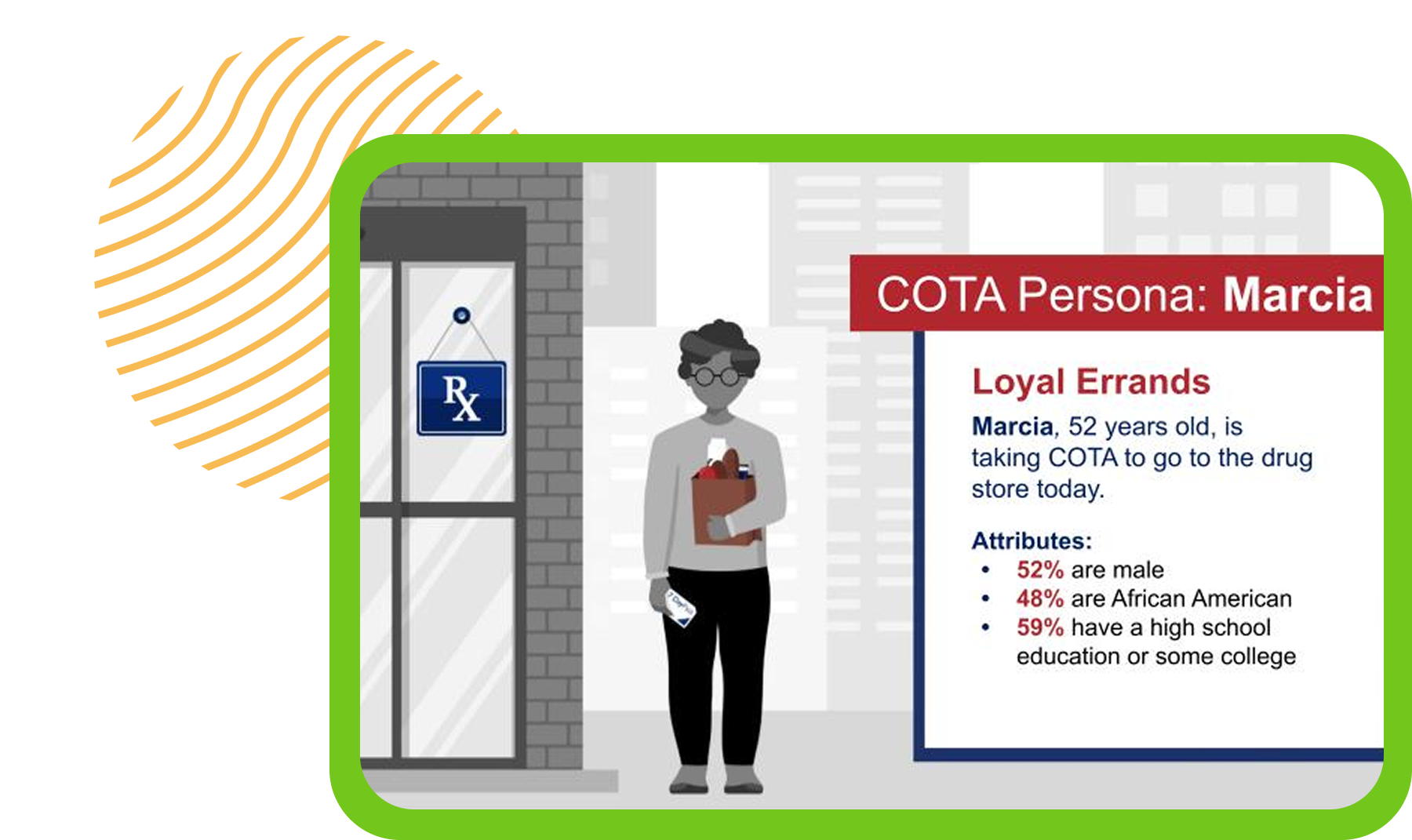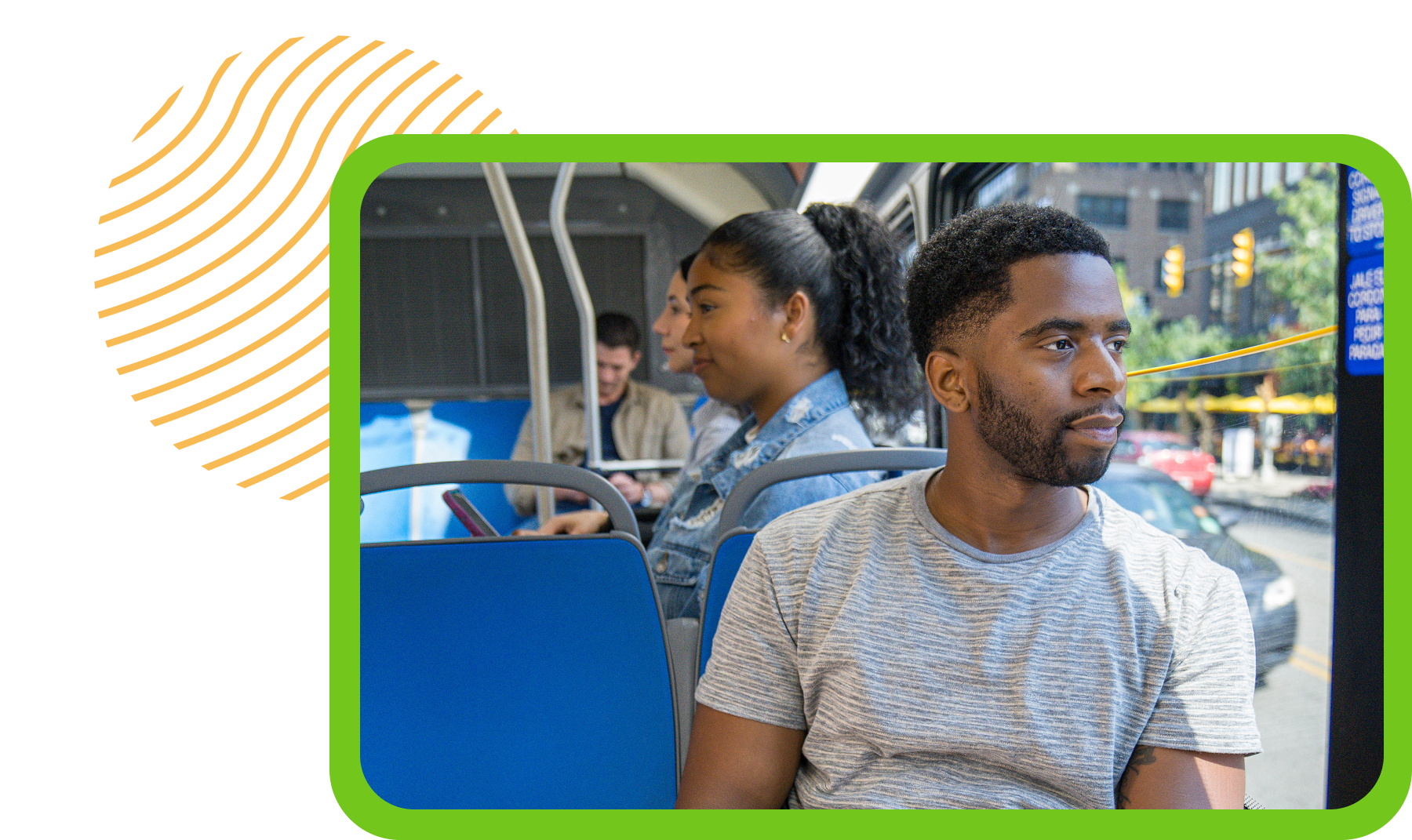Understanding COTA’s Riders with Customer Personas
EMC Research’s Role in Developing Customer Personas to Guide COTA’s Fare and Service Policies
The Central Ohio Transit Authority (COTA) sought a deeper understanding of its diverse customer base to better inform key policy and operational decisions. EMC Research partnered with COTA to apply advanced data analytics, moving beyond traditional demographic segmentation to develop six unique customer personas. These personas helped COTA improve fare policies, route planning, and service equity by centering decisions around the needs and behaviors of real riders.

The Problem
As Central Ohio continues to grow, COTA remains committed to evolving its services to meet the region’s changing mobility needs. Historically, public transit agencies have segmented riders into broad categories such as “core” (lower income, transit-dependent) and “choice” (higher income, with access to a personal vehicle). These classifications, based primarily on demographics like income level and geography, lacked the depth needed to support nuanced policy and operational decisions.
COTA needed better insights to guide critical initiatives such as fare payment modernization, route planning, and service adjustments. Leadership was particularly concerned that transitioning to digital fare payments might unintentionally disadvantage the agency’s most vulnerable riders. To ensure equitable and effective service, COTA required a more detailed, behavioral-based understanding of its customers.

EMC Research’s Strategy
EMC Research partnered with COTA to address this challenge by leveraging data analytics to add value to our years of customer research. Using aggregated data from multiple years of the annual COTA customer satisfaction studies (also conducted by EMC Research), our team of data scientists used advanced machine learning and cluster analysis techniques to develop the personas. This approach allowed us to move beyond demographic segmentation and instead group customers based on attitudinal and behavioral data.

Key aspects of our strategy included:
Cluster Analysis: Using advanced statistical and data science techniques to identify internally similar and externally distinct customer groups.
Persona Development: Selecting a set of clusters with meaningful insight for COTA’s needs and creating simple descriptions and visual representations of each.
Actionable Insights: Highlighting behavioral trends and barriers specific to each group to inform COTA’s decision-making.
For example, one persona, named “Martin,” represented younger, lower-income, predominantly African-American customers who used the bus mostly to get to and from work. These customers were very frequent riders who relied on cash fares because of the upfront cost of a $62 monthly pass. They were also smartphone users who relied on digital scheduling information.

Our Results
The introduction of customer personas revolutionized COTA’s approach to policy and planning. These personas provided the agency with actionable insights to address specific customer needs and concerns. Key outcomes included:
Data-Driven Decision-Making: COTA began using personas as a lens for evaluating the impact of its policies on customers, constantly asking “How will this decision impact customers like Martin or Marcia?”.
More Nuanced Equity Lens: The customer personas gave COTA the ability to understand its lower-income and more transit-dependent customers in more depth in terms of their transit needs, rather than treating these customers as a monolith.
Fare Policy Improvements: The insight that riders like Martin could save money with digital fare payment options informed the agency’s decision to adopt a more flexible and affordable fare payment system.
By embracing this nuanced view of their ridership, COTA was able to balance equity and efficiency in their operations, ultimately improving the experience for all customers while addressing the needs of their most vulnerable riders. The success of the customer personas initiative demonstrates the power of data analytics and targeted research in transforming public transit agencies’ understanding of their customers and guiding impactful, equitable policy decisions.

